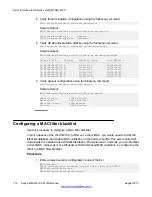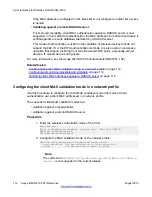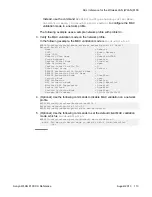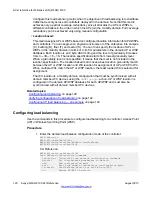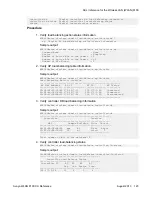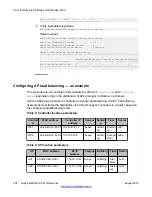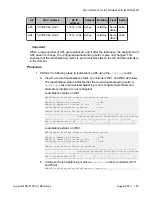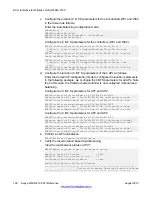
Instead, use the command
WCP8180(config-network-profile)#mac-
validation mode {local-whitelist|radius}
to configure the MAC
validation mode in a network profile.
The following example uses a sample network profile with profile Id
2
.
3. Verify the MAC validation mode on the network profile.
In the following example, the MAC validation mode is
local-whitelist
.
WC8180(config-wireless)#show wireless network-profile 2 detail
Network Profile ID: 2
Name : Default
SSID : Guest-Network
Hide SSID : No
Mobility Vlan Name : default-MVLAN
Probe Response : Enabled
Captive Portal Mode : Disabled
User Validation : open
Captive Portal Profile Id : 0
Local User Group : Default
RADIUS Authentication Profile Name :
RADIUS Accounting Profile Name :
RADIUS Accounting Mode : Disabled
Security Mode : open
MAC Validation : Enabled
MAC Validation mode : Local-Whitelist
Wireless ARP Suppression : Disabled
Radius offload : Disabled
Station Isolation Mode : Disabled
Gateway MAC address : 00:00:00:00:00:00
4. (Optional) Use the following commands to disable MAC validation on a network
profile.
WCP8180(config-wireless)#network-profile 2
Entering network-profile (id = 2) ...
WCP8180(config-network-profile)#no mac-validation
5. (Optional) Use the following commands to set the default client MAC validation
mode, which is
local-whitelist
.
WC8180(config-network-profile)#default mac-validation ?
mode Set mac-validation mode to default value local-whitelist
<cr>
ACLI reference for the Wireless LAN (WLAN) 8100
Avaya WLAN 8100 CLI Reference
August 2013 113












